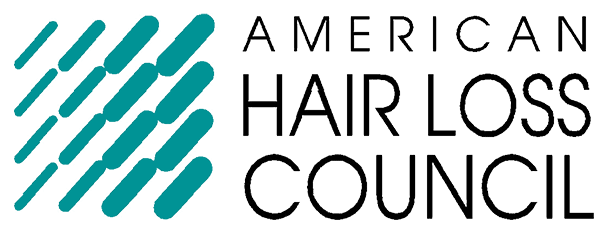Dutasteride for Hair Loss in Men
Is Dutasteride the Most Powerful Hair Growth Drug?
Because of its ability to dramatically reduce DHT levels, dutasteride is often considered one of the strongest hair loss treatments for male prn baldness in the world, even though it has not been FDA-approved for that use. Its long half-life (compared to finasteride) may allow for less than daily dosing once a steady state is reached. However, concerns about rare side effects and especially dutasteride’s tendency to “linger” in the body due to its long half-life are a concern for many patients and physicians who may prescribe this off-label treatment.
What is Dutasteride?
Dutasteride is a potent 5AR 5-alpha reductase enzyme inhibitor (blocker) and therefore suppresses the production of DHT dihydrotestosterone, a key trigger for male AGA Androgenetic Alopecia aka Male Pattern Hair Loss. Currently, oral dutasteride has been approved only in Japan (in 2015) and South Korea (in 2010) for male AGA and is not approved by the US FDA for the treatment of male pattern hair loss. Oral dutasteride 0.5mg (Avodart) was approved by the FDA in 2001 for the treatment of BPH benign prostatic hypertrophy or prostate enlargement in men. This makes dutasteride an “off-label” prescription treatment for male pattern hair loss in the US.
Dutasteride has been shown to provide a greater and more consistent reduction in DHT than finasteride by blocking or inhibiting the action of Type-1, Type-2, and Type-3 5AR enzyme isotypes. In contrast, finasteride inhibits only Type-2 5AR. Recent studies suggest that dutasteride is more powerful at inhibiting Type-1 and Type-3 5AR than finasteride, that Type-3 5AR is more highly expressed in peripheral tissues, and that Type-1 and Type-3 5AR may play important roles in AGA. Therefore dutasteride is considered by many to be the strongest drug available to treat male pattern hair loss.
The enzyme 5α-reductase catalyzes the formation of DHT from testosterone in certain tissues, including the prostate gland, seminal vesicles, epididymides, skin, hair follicles, liver, and brain.
Dutasteride is typically taken orally, but topical preparations (e.g., Formula 82D topical dutasteride+minoxidil), as well as injectable Dutasteride Mesotherapy treatment applications, have been used successfully as well.
Some of the more well-known celebrities who have publicly discussed their use of dutasteride (Avodart) for hair loss are Ashton Kutcher and Rick Rosner.
How does Dutasteride Work for Hair Loss? What is Dutasteride’s Mechanism of Action?
Dutasteride suppresses the production of DHT, a key trigger for the progressive miniaturization of hair follicles that occurs in male AGA. Hair follicles located in the hairline and the vertex/crown area are the first to typically undergo miniaturization in male AGA, which can eventually lead to receding hairline and temples as well as a bald spot in the crown. Left unchecked, this progressive loss will continue with time and could potentially progressively affect all of the hair on the top of the scalp, sparing the hair on the sides and the back.
When DHT production is suppressed, hair follicle miniaturization is halted, slowed, and oftentimes reversed in these patients.
How much lower will my DHT go with Dutasteride vs. Finasteride?
Because of the inhibition of all three 5AR enzyme types, dutasteride 0.5mg achieves over a 90% reduction in DHT, compared to only a 65-70% reduction of serum DHT with finasteride 5mg. [See graph above]
Is Dutasteride the Best Treatment for Male Hair Loss?
In a recent meta-analysis review of clinical trials published in peer-reviewed journals, dutasteride was shown to be a more powerful treatment than finasteride. This conclusion was based on a detailed statistical analysis of previously published studies that met certain inclusion criteria. Based on this evidence, clinical experience, and anecdotal reports, it is almost certain that dutasteride will provide superior hair growth results compared to finasteride.
[ABOVE: Dutasteride can be prescribed as an oral medication, topical medication, or injected into the scalp as a mesotherapy treatment.]
How is Dutasteride Prescribed?
Dutasteride can be prescribed as an oral medication, topical medication, or injected as a mesotherapy treatment. Oral dosing strategies in terms of dose and interval vary depending on a number of factors, including balancing effectiveness with the potential for side effects. Dr. Bauman will discuss your individualized dutasteride dosing strategy with you during your private one-on-one medical hair loss consultation, which can be accomplished in person or virtually. Dosing of oral dutasteride can range from 0.5mg, 1.25mg, 5mg, or even 40mg (loading dose) in some studies. We’ve seen dosing intervals from daily, every other day, three days a week, and once a week.
Can Dutasteride be used in combination with other therapy?
Yes, dutasteride is often combined with photobiomodulation/laser therapy, proper scalp hygiene/shampoos, oral or topical minoxidil, nutritional modification or supplementation, as well as Regenerative Treatments like PRP, PDOgro, TED, and FUE hair transplantation.
What are the Main Side Effects of Dutasteride?
Overall, the use of dutasteride has been well-tolerated in studies including both male and female patients, producing only minimal side effects. Side effects from dutasteride are similar to other anti-androgen and 5AR inhibitors, and they include effects on sexual function, such as mild erectile dysfunction and decreased libido. An often desirable “side effect” of dutasteride is the reduction of prostate size.
What is the “Half-Life” of Dutasteride vs. Finasteride?
The serum half-life of a drug is the amount of time it takes for your body to reduce its amount by half of its original value in your bloodstream. Half-life is used to estimate how long it takes for a drug to be removed from your body. A longer half-life means the medication stays in your body longer, whereas a shorter half-life means that your body eliminates the drug more quickly. Half-life gives a rough idea of the pharmacokinetics and pharmacodynamics of a drug, elucidating how your body processes and excretes the drug, and also offers insight into “steady-state” concentrations. Half-life also has an impact on the duration of action of a drug. It also gives insight into an optimal dosing strategy, including loading dose, the quantity of dose, and frequency of dosing or dosing interval, in order to produce a safe and effective therapeutic effect. Half-life can be affected by a patient’s age, genetics, metabolism, drug-drug interactions, and many other factors.
Compared to finasteride, dutasteride has a much longer half-life. Finasteride has a half-life of approximately 6-8 hours, whereas dutasteride has a half-life of about 4 weeks. Some experts believe the longer half-life of dutasteride means that the medication does not need to be taken daily. A longer half-life also is important when it comes to resolving unwanted side effects by stopping the medication. When men experience side effects with finasteride, they usually resolve in about a week after stopping the medication. If men experience side effects with dutasteride, they can expect that the side effects could continue to last for a month or longer before they resolve.
How long does it take for dutasteride to be removed from my body if I stop the drug?
Because of the long half-life, it could take a month or longer for levels of dutasteride in your blood to drop. Once dutasteride levels drop, DHT production will increase, and hair loss will gradually resume over time if other therapies are not initiated.
Will I be at more risk for side effects from dutasteride vs finasteride?
According to the published clinical trials on dutasteride and finasteride, the drugs are both well tolerated in men. However, as we would expect from the stronger mechanism of action of dutasteride, there is a slightly higher incidence of sexual side effects–approximately 4.8% of patients with dutasteride compared to just 1.8% of patients on finasteride.
What is the Correct Dose and Frequency of Dutasteride?
Studies have consistently shown that hair growth with dutasteride is equal or greater than that seen with finasteride. 2.5mg daily has been shown to be more effective than 0.5mg per day.
The optimal dosage and frequency of dosing is a hotly debated topic of discussion amongst hair loss sufferers and physicians alike. We have prescribed dosages that range from 0.5mg, 1mg, 1.5mg, 2mg, and 2.5mg, and we have seen dosages as high as 40mg (loading dose) discussed in the clinical literature. I have also seen dosing intervals range from daily to once, twice, or three times per week.
As with finasteride, we prefer to prescribe a quality compounded version of the drug so that we can be sure of the consistency of the quality of the raw product, the accuracy of dosing, and also carefully monitor the quantity of medication you are using. We have personally seen too many issues using generic finasteride to allow the same problems to occur with dutasteride.
Oftentimes, we prescribe dutasteride along with specific synergistic nutritionals such as B complex vitamins, MSM, and biotin.
Should I switch from finasteride to dutasteride for hair loss?
Switching from finasteride to dutasteride is something you should discuss with your Hair Restoration Physician. Because of the different pharmacokinetics and pharmacodynamics of dutasteride compared to finasteride, your physician may recommend overlapping the two medications for some time while levels of dutasteride build up in your system. He may also recommend a “loading dose” initially to boost serum levels when starting the drug. Your doctor may recommend trying an adjunctive therapy (such as minoxidil, PRP, photobiomodulation/laser therapy, nutritional or other therapy) instead of trying to decrease your DHT further with dutasteride. A discussion of your risk tolerance for side effects, hair restoration goals, and other factors would be important before starting a dutasteride regimen for hair growth.
How Do I Know Dutasteride for Hair Growth is Working?
As with any hair growth treatment, routine monitoring of hair growth measurements is recommended every 90 days, especially when starting a new treatment regimen or changing dosing. Measurements often give a strong indication of hair growth improvements LONG before results are visible to the naked eye or on standardized clinical photos. Measurements typically improve within three to six months, and visible results can be observed in approximately six to twelve months.
Serum DHT levels and urine metabolites for the 5AR pathway are other biomarkers that could be used to evaluate how well dutasteride or other treatments are working to inhibit DHT production in your body. However, keep in mind that serum DHT does not tell us how sensitive you are to DHT, which could make you prone to more hair loss than someone else with the same DHT level, but lower hair follicle sensitivity to DHT.
It cannot be overstated that detailed measurements with HairCheck, HairMetrix, HairCamPRO, or other methods are strongly encouraged because hair growth rates of ¼ to ½ inch per month mean that visible results can take many months to be observed. NOTE: One of the most common mistakes hair loss patients make is stopping treatments that are working just before the results become visible to the naked eye. Measurements solve this common problem by giving you quick feedback regarding your results from any treatment or insult to your hair.
Sometimes different areas of the scalp respond differently to medications and other therapies depending on the degree of hair loss, amount of miniaturization vs. density loss, and other hair restoration treatments such as PRP, hair transplantation, etc.
What are the Known Side Effects of Dutasteride?
Although statistically rare, the most commonly reported side effects of dutasteride include sexual dysfunction, breast tenderness, and depression. Exposure to dutasteride and other anti-androgens is specifically contraindicated in women who are pregnant, nursing, or trying to conceive, due to the theoretical risk to a developing male fetus.
Interestingly, side effects with dutasteride are less commonly reported clinically than side effects with finasteride. Side effects from oral dutasteride can be avoided by using topical dutasteride (Formula 82D) or Dutasteride Mesotherapy.
What is the Issue with Dutasteride and Fertility?
Despite the fact that dutasteride is FDA-approved for men for BPH benign prostate enlargement, the impact of dutasteride on fertility remains unclear. Aside from the rare sexual side effects of erectile dysfunction and decreased libido, studies have supported the concept that the use of dutasteride (and possibly finasteride) can decrease sperm count and semen volume. In one study, there was a slight but statistically significant 28% decrease in sperm count after six months on dutasteride. Sperm morphology appeared normal in both finasteride and dutasteride portions of this study, and recovery of sperm counts, concentration, and semen volume were noted after drug discontinuation. The study authors concluded that dutasteride (and likely finasteride) has a mild negative effect on spermatogenesis that generally would not have an impact on fertility. However, they did note that some participants in the study demonstrated a high degree of sensitivity to 5AR inhibition from dutasteride resulting in significant decreases in total sperm count.
The bottom line is that concerns about fertility should be discussed with your physician before starting any anti-androgen medication like dutasteride.
Can we use Dutasteride in Women for Female Pattern Hair Loss or other conditions?
Dutasteride is not approved by the FDA for female hair loss. Because dutasteride (like finasteride) is a 5AR inhibitor that lowers DHT production, it has the potential to cause birth defects in a developing male fetus. Therefore, dutasteride is contraindicated in women of childbearing age. However, post-menopausal women have often been treated successfully “off-label” with 5AR inhibitors such as finasteride and dutasteride. If you are postmenopausal, you should discuss the use of dutasteride for female hair loss with your Hair Restoration Physician.
Where can I get Topical Dutasteride?
Dr. Bauman routinely prescribes Topical Dutasteride, aka Formula 82D (topical dutasteride with minoxidil, fluocinolone, and tretinoin in a non-greasy, fast-absorbing base). More information about Topical Dutasteride Formula 82D can be found here. A consultation with Dr Bauman is required in order to obtain a prescription for high-quality topical Formula 82D Topical Dutasteride.
Does Dr. Bauman prescribe oral Dutasteride?
Yes. Dr. Bauman is happy to discuss the pros and cons of dutasteride with any patient. He often prescribes dutasteride in oral, topical, or mesotherapy formats to his patients. He prefers to prescribe quality compounded oral dutasteride rather than generic forms of the medication.
What about Dutasteride Mesotherapy?
One of the latest interventions for male AGA is Dutasteride Mesotherapy which is an in-office procedure during which a sterile solution of dutasteride is injected into the scalp using painless local anesthesia. Recent research in the peer-reviewed clinical literature supports the use of Dutasteride Mesotherapy. The process takes approximately one hour and should be repeated approximately every 90 days. Learn more about Dr. Bauman’s Dutasteride Mesotherapy here.
How can I get started on Dutasteride?
To determine if you are a good candidate for dutasteride, a detailed medical hair loss consultation is recommended. A private one-on-one consultation with Dr. Alan Bauman can be performed in-office or virtually. Request your consultation today.
If you or someone you know has hair loss, hair thinning, baldness, or eyebrow / eyelash concerns, click to start either a long-distance virtual consultation OR an in-person, in-office consultation with Dr. Bauman. You can also Ask Dr. Bauman a Question or simply call Bauman Medical Group at +1-
*Each individual's treatment and/or results may vary






 Topical Dutasteride Formula 82D
Topical Dutasteride Formula 82D What is Dutasteride Mesotherapy?
What is Dutasteride Mesotherapy? PRESS RELEASE: Hair Loss Awareness Month 2022 – Advancements In Treatments & Technology: Accuracy, Precision, & Rapid Results
PRESS RELEASE: Hair Loss Awareness Month 2022 – Advancements In Treatments & Technology: Accuracy, Precision, & Rapid Results Dr. Alan J. Bauman, M.D.Hair Loss & Hair Transplant ExpertBoca Raton, FL
Dr. Alan J. Bauman, M.D.Hair Loss & Hair Transplant ExpertBoca Raton, FL






